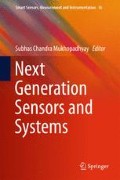Abstract
Zirconia electrochemical oxygen sensor is widely used today in different industrial power and chemicals production applications (O2-Analyzer) and transportation (lambda sensor). Non-Faradaic Electrochemical Modification of Catalytic Activity (NEMCA) was invented in 80th and shown high efficiency in the catalytic activity and selectivity increase of the gas exposed electrodes. For the first time NEMCA was investigated for the activation and re-activation of the industrial potentiometric oxygen sensor based on stabilized zirconia solid electrolyte. Electrochemical promotion of O2-sensors with Pt-cermet electrodes aged in the field was significant with up to 5 times in the sensor’s impedance reduction. Stability tests on the NEMCA activated O2-sensors were showing just a minor impedance increase after 2 weeks. Sensor response time was also reduced using NEMCA by ~5–10 % with up to 3 times the sensor’s signal noise reduction on the aged zirconia oxygen electrochemical cells.
Access this chapter
Tax calculation will be finalised at checkout
Purchases are for personal use only
References
H. Peters, H-H. Möbius, Procedure for the gas analysis at elevated temperatures using galvanic solid electrolyte elements, DD Patent 21673, Aug 1961
J. Weissbart, R. Ruka, Oxygen gauge. Rev. Sci. Instrum. 32(5), 593–595 (1961)
H.-H. Möbius, Solid state electrochemical potentiometric sensors for gas analysis, in Sensors a Comprehensive survey, vol. 3, ed. by W. Göpel, J. Hesse, J.N. Zemel (VCH, New York, 1992), pp. 1105–1154
W.C. Maskell, Progress in the development of zirconia gas sensors. Solid State Ionics 134(1–2), 43–50 (2000)
S. Zhuiykov, Electrochemistry of zirconia gas sensors (CRC Press, Boca Raton, 2008)
P. Shuk, Process zirconia oxygen analyzer: state of art. Tech. Mess. 77(1), 19–23 (2010)
C.G. Vayenas, S. Bebelis, S. Neophytides, Non-Faradaic electrochemical modification of catalytic activity. J. Phys. Chem. 92(18), 5083–5085 (1988)
C.G. Vayenas, S. Bebelis, S. Ladas, Dependence of catalytic rates on catalyst work function. Nature 343(6259), 625–627 (1990)
Y. Jiang, I.V. Yentekakis, C.G. Vayenas, Methane to ethylene with 85 percent yield in a gas recycle electrocatalytic reactor-separator. Science 264(5165), 1563–1566 (1994)
C.G. Vayenas, S.I. Bebelis, Electrocatalysis, catalysis and electrochemical promotion in solid electrolyte cells, in Oxygen Ion and Mixed Conductors and their Technological Applications, ed. by H.L. Tuller, J. Schoonman, I. Riess (Kluwer Academic, Dordrecht, 2000), pp. 123–164
C.G. Vayenas, S. Bebelis, C. Pliangos, S. Brosda, D. Tsiplakides, in Electrochemical Activation of Catalysi. promotion. electrochemical promotion, and metal-support interactions, (Kluwer Academic, New York, 2001)
C.G. Vayenas, A. Katsaounis, S. Brosda, A. Hammad, Electrochemical modification of catalytic activity, in Handbook of Heterogeneous Catalysis, vol. 8, ed. by G. Ertl, H. Knözinger, F. Schüth, J. Weitkamp (Wiley-VCH Publishers, Weinheim, 2007), pp. 1905–1935
A. Katsaounis, Electrochemical promotion of catalysis (EPOC) perspectives for application to gas emissions treatment. Glob. NEST 10(2), 226–236 (2008)
C.G. Vayenas, C.G. Koutsodontis, Non-Faradaic electrochemical activation of catalysis. J. Chem. Phys. 128(18), 1–13, 182506 (2008)
C.G. Vayenas, Bridging electrochemistry and heterogeneous catalysis. J. Solid State Electrochem. 15(7–8), 1425–1435 (2011)
P. Shuk, E. Bailey, U. Guth, Zirconia oxygen sensor for the process application: state-of-the-art. Sens. Transducers J. 90(4), 174–184 (2008)
K. Kinoshitta, Electrochemical oxygen technology (Wiley, New York, 1992)
Acknowledgment
The authors would like to thank Rosemount Analytical Inc. for the research program support and Professor Costantinos G. Vayenas as well as Dr. Susanne Brosda for the sharing numerous NEMCA publications and NEMCA/EPOC/ICP knowledge.
Author information
Authors and Affiliations
Corresponding author
Editor information
Editors and Affiliations
Rights and permissions
Copyright information
© 2016 Springer International Publishing Switzerland
About this chapter
Cite this chapter
Shuk, P., Jantz, R. (2016). Aged Zirconia Electrochemical Oxygen Sensor Activation and Re-activation Using NEMCA. In: Mukhopadhyay, S. (eds) Next Generation Sensors and Systems. Smart Sensors, Measurement and Instrumentation, vol 16. Springer, Cham. https://doi.org/10.1007/978-3-319-21671-3_6
Download citation
DOI: https://doi.org/10.1007/978-3-319-21671-3_6
Published:
Publisher Name: Springer, Cham
Print ISBN: 978-3-319-21670-6
Online ISBN: 978-3-319-21671-3
eBook Packages: EngineeringEngineering (R0)

